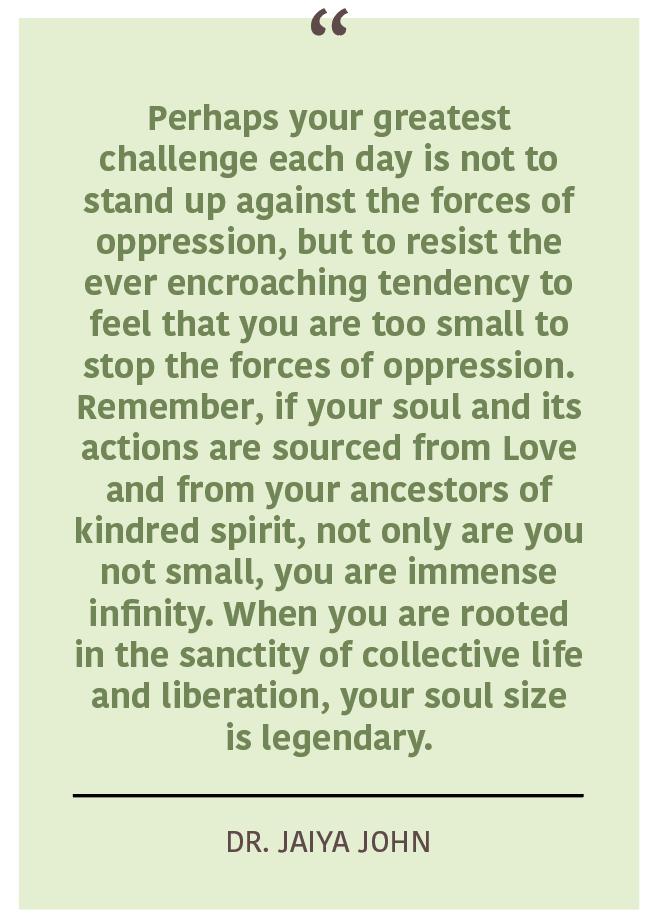Editor's Note | Vol. 21 | Issue 1
On behalf of our NIWRC staff, Board of Directors, and especially our Restoration Magazine team—Liane, Kelsey, Tang, LeAnne, and I—please join us in celebrating 20 years of Restoration! We thank everyone who began Restoration in 2004—Sacred Circle, Clan Star, Inc., and the National Congress of American Indians. Thank you to our past Editors—Jacqueline “Jax” Agtuca, Terri Henry, and Mallory Adamski—and our many supporters and contributors who shared “information necessary to create the changes needed”1 to help with our advocacy to restore Tribal sovereignty and increase the safety of Native women.
Restoration was launched in 2004, during the campaign to reauthorize the Violence Against Women Act of 2005, when national organizations came together to take a stand, calling for the inclusion of a VAWA title for Native women. These organizations recognized that for Tribal leaders, advocates, and Tribal communities to participate in the national movement fully, they needed continuous political briefings on issues impacting the safety of Native women and emerging legislation…At the time, the magazine was a primer on violence against Native women…Looking at the theft of the land and resources of Indigenous nations and the use of violence against Indigenous women in the United States, the questions to ask in the struggle for survival strategically is (sic), what goal is achieved through the oppression and how we can win our struggle of resistance. Understanding the foundation of any emerging issue returns to these questions. Over the years, Restoration has contributed to understanding and answering these questions article by article, providing analysis to make systemic reforms, and working with the national movement to create the changes needed to the law or policies.2
As we look to 2024, we must continue asking what goals are achieved through the oppression of Tribal Nations and Native Hawaiians, and how can we win our struggle of resistance? Our struggle of resistance is reflected in restoring protections for women rooted in Indigenous voices, languages, and teachings and reforming and transforming federal and state/local responses to violence against women. Our alliances with non-Native organizations, including the National Task Force to End Sexual and Domestic Violence, have also played an important role in effecting the changes in federal laws and policies for Native women and Tribes, immigrant women, LGBTQ2S+, and women of color.
Following my Editor’s Note, we have re-printed Jax Agtuca’s Editor’s Note from February 2021, as Jax’s analysis and call to action remain our challenge:
“Acknowledgement of injustices must be connected to changes that structurally correct the injustice…a far greater challenge is altering the dominant societal view of Native women…how current departments and agencies of the federal government maintain structural inequalities separating Native women.”
 In partnership with the Alaska Native Women’s Resource Center (AKNWRC) and the Pouhana O Nā Wāhine (PONW), we recently spent two days on Moloka’i Island for a community engagement session. Participants described our time together as inspiring, authentic, meaningful sharing of mana‘o (thoughts), a safe space that created deep conversations, and one participant shared a quote from Jaiya John. Most importantly, we planted a seed with Native Hawaiians on Moloka‘i to begin addressing violence against Native Hawaiian women.
In partnership with the Alaska Native Women’s Resource Center (AKNWRC) and the Pouhana O Nā Wāhine (PONW), we recently spent two days on Moloka’i Island for a community engagement session. Participants described our time together as inspiring, authentic, meaningful sharing of mana‘o (thoughts), a safe space that created deep conversations, and one participant shared a quote from Jaiya John. Most importantly, we planted a seed with Native Hawaiians on Moloka‘i to begin addressing violence against Native Hawaiian women.
While many Tribes and Native communities across the country have developed responses to violence against women, Moloka‘i reminded me that many more need support across the country. We must do more to connect survivors, advocates, and community leaders with each other. I remembered what Terri Henry shared about how much stronger we are when working together—the story of an individual stick being easier to break than a bundle of sticks. Community organizing that includes gathering and sharing mana‘o and information, developing analyses of systemic barriers from Indigenous perspectives, strengthening relationships and alliances, and identifying recommendations for changes in laws, policies, and practices must continue to be our strategy for increasing Indigenous women’s safety. So much of our social change work is also about what some believe is impossible to change. As the late Yup’ik Elder Rose Borkowski from the Alaska Native Village of Emmonak shared, “Nothing is ever impossible. Everything’s possible.” The grassroots movement from the 70s to the present reflects the impossible made possible.
For 30 years I have been blessed with making relatives and understanding my responsibilities as a relative. They include never giving up hope for healing, safety, and justice as Native women, their families, Tribal Nations, and Native Hawaiians define these. While traveling has challenges, connecting and making new friends and relatives is rejuvenating and nourishing. We turn our attention to Moloka‘i to help the seed germinate and grow and encourage others to do the same across the country. Because we united and bundled our advocacy efforts, we changed laws and policies and increased resources over the last 20 years for American Indian and Alaska Native Tribes, Native Hawaiians, and others.
1 https://www.niwrc.org/sites/default/files/files/magazine/resto-ration.18.1_1.pdf
2 https://www.niwrc.org/restoration-magazine/october-2021/edi-tors-note-vol-18-issue-3





